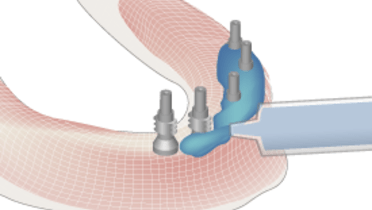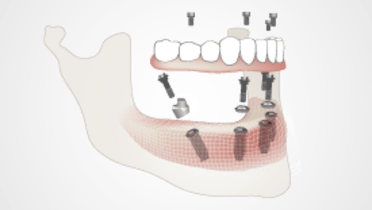-
0
Patient Assessment
- 0.1 Patient demand
- 0.2 Overarching considerations
- 0.3 Local history
- 0.4 Anatomical location
- 0.5 General patient history
-
0.6
Risk assessment & special high risk categories
- 5.1 Risk assessment & special high risk categories
- 5.2 age
- 5.3 Compliance
- 5.4 Smoking
- 5.5 Drug abuse
- 5.6 Recreational drugs and alcohol abuse
- 5.7 Parafunctions
- 5.8 Diabetes
- 5.9 Osteoporosis
- 5.10 Coagulation disorders and anticoagulant therapy
- 5.11 Steroids
- 5.12 Bisphosphonates
- 5.13 BRONJ / ARONJ
- 5.14 Radiotherapy
- 5.15 Risk factors
-
1
Diagnostics
-
1.1
Clinical Assessment
- 0.1 Lip line
- 0.2 Mouth opening
- 0.3 Vertical dimension
- 0.4 Maxillo-mandibular relationship
- 0.5 TMD
- 0.6 Existing prosthesis
- 0.7 Muco-gingival junction
- 0.8 Hyposalivation and Xerostomia
- 1.2 Clinical findings
-
1.3
Clinical diagnostic assessments
- 2.1 Microbiology
- 2.2 Salivary output
-
1.4
Diagnostic imaging
- 3.1 Imaging overview
- 3.2 Intraoral radiographs
- 3.3 Panoramic
- 3.4 CBCT
- 3.5 CT
- 1.5 Diagnostic prosthodontic guides
-
1.1
Clinical Assessment
-
2
Treatment Options
- 2.1 Mucosally-supported
-
2.2
Implant-retained/supported, general
- 1.1 Prosthodontic options overview
- 1.2 Number of implants maxilla and mandible
- 1.3 Time to function
- 1.4 Submerged or non-submerged
- 1.5 Soft tissue management
- 1.6 Hard tissue management, mandible
- 1.7 Hard tissue management, maxilla
- 1.8 Need for grafting
- 1.9 Healed vs fresh extraction socket
- 1.10 Digital treatment planning protocols
- 2.3 Implant prosthetics - removable
-
2.4
Implant prosthetics - fixed
- 2.5 Comprehensive treatment concepts
-
3
Treatment Procedures
-
3.1
Surgical
-
3.2
Removable prosthetics
-
3.3
Fixed prosthetics
-
3.1
Surgical
- 4 Aftercare
Impression - parallel vs non-parallel implants
Key points
- The use of angulated implants to improve patient rehabilitation leads to the intentional and desirable placement of non- parallel implants which affects impression procedures
- It is important to evaluate the parallelism of implants to determine the impression technique that will be used
- When the implants are relatively parallel to one another, either a closed tray or open tray impression technique can be used
- The open tray technique is required when the implants are not parallel to one another
Parallel implants
It is important to evaluate whether the implants are parallel to each other. If the implants are fairly parallel to each other (Fig 1) a closed tray impression technique can be employed. Since the implants are parallel to each other, the polymerized impression can be removed from the mouth without significant resistance. Splinting of the impression copings together is a matter of personal preference for the clinician.
Non-parallel implants
The excellent long-term clinical outcomes observed from the treatment of edentulous jaws with a reduced number of implants through the use of angulated posterior implants and vertical anterior implants as seen with the All-on-4 patient solution are very encouraging. The clinician, during the treatment planning phase, must be cognizant of access issues for placement and tightening and loosening of impression coping screws as well as placement and retrieval of the impression since distal angulation of posterior implants requires access and sufficient mouth opening of the patient.
As far as key clinical steps are concerned, a modified clinical protocol is required to make accurate impressions of non-parallel implants because if a closed tray impression is used in these situations (Fig 2a), it will be difficult to remove the impression without tearing or distortion and it may even become locked around the copings. Non-parallel implants are a clear indication for use of an open tray technique (Fig 2b). A custom tray is fabricated with appropriate channels present in the tray that allow the open tray impression copings to project through the tray. In this way, the impression coping screws can be easily accessed for loosening after the impression material polymerizes. Once the impression coping screws are loosened, the impression with the open tray impression copings embedded can be easily removed (Fig 2c).



